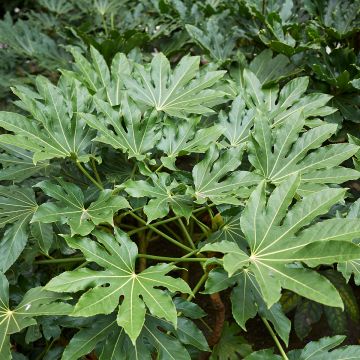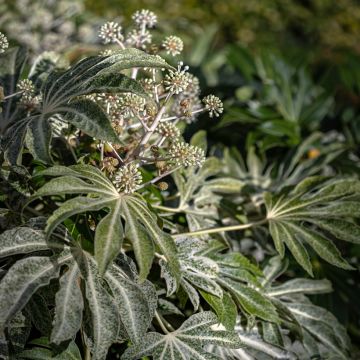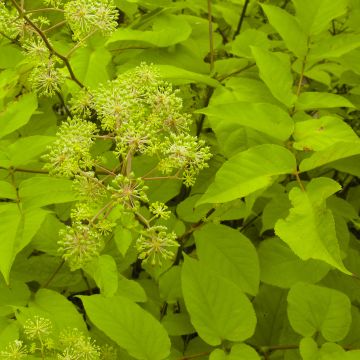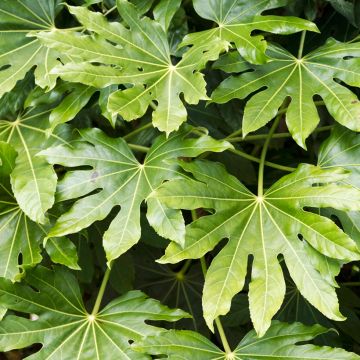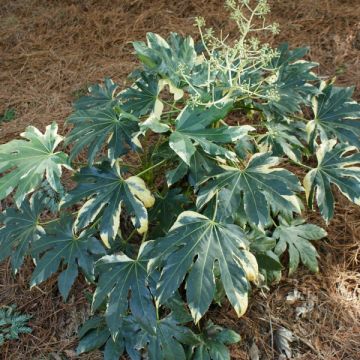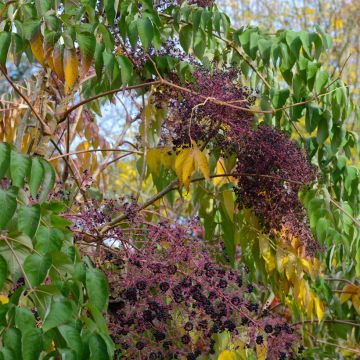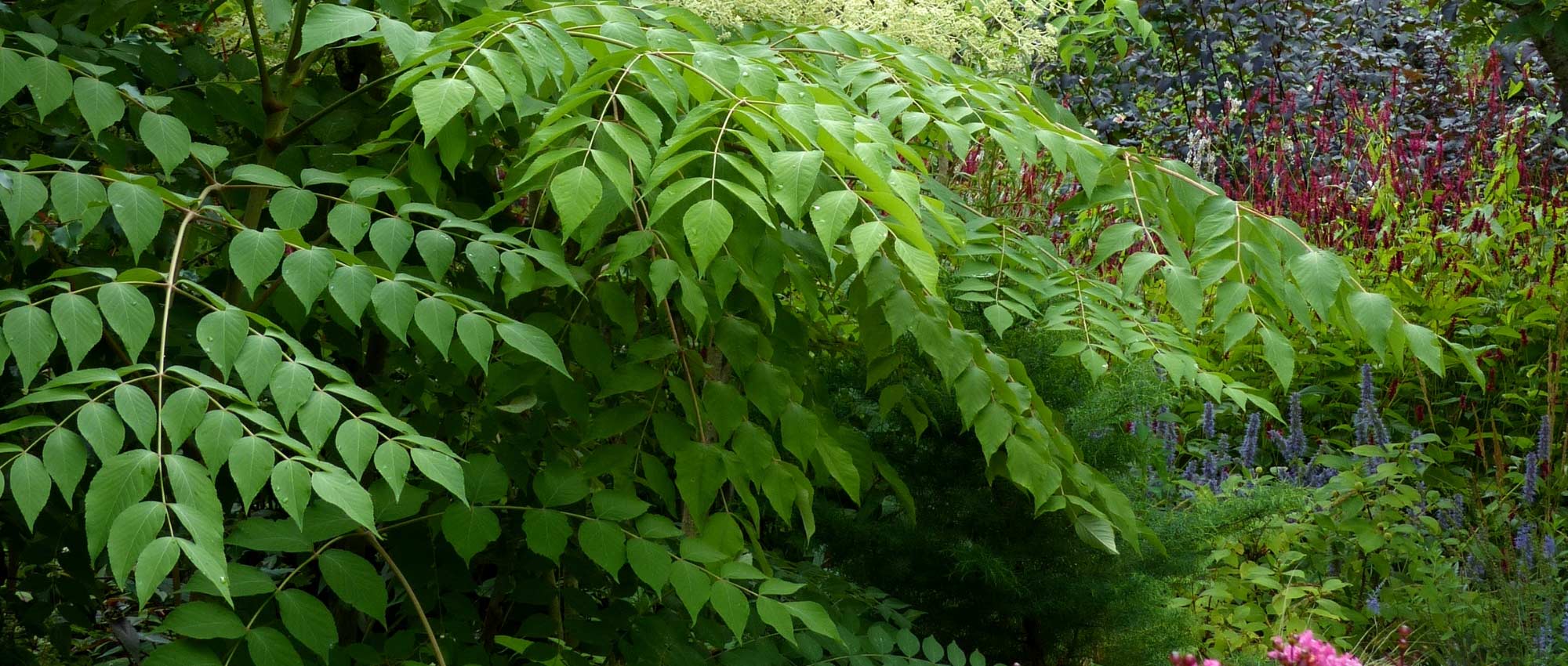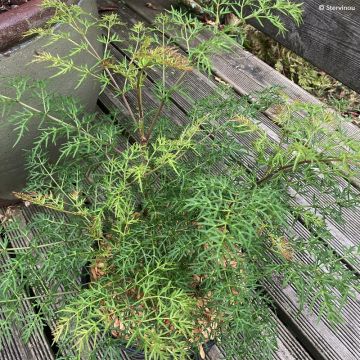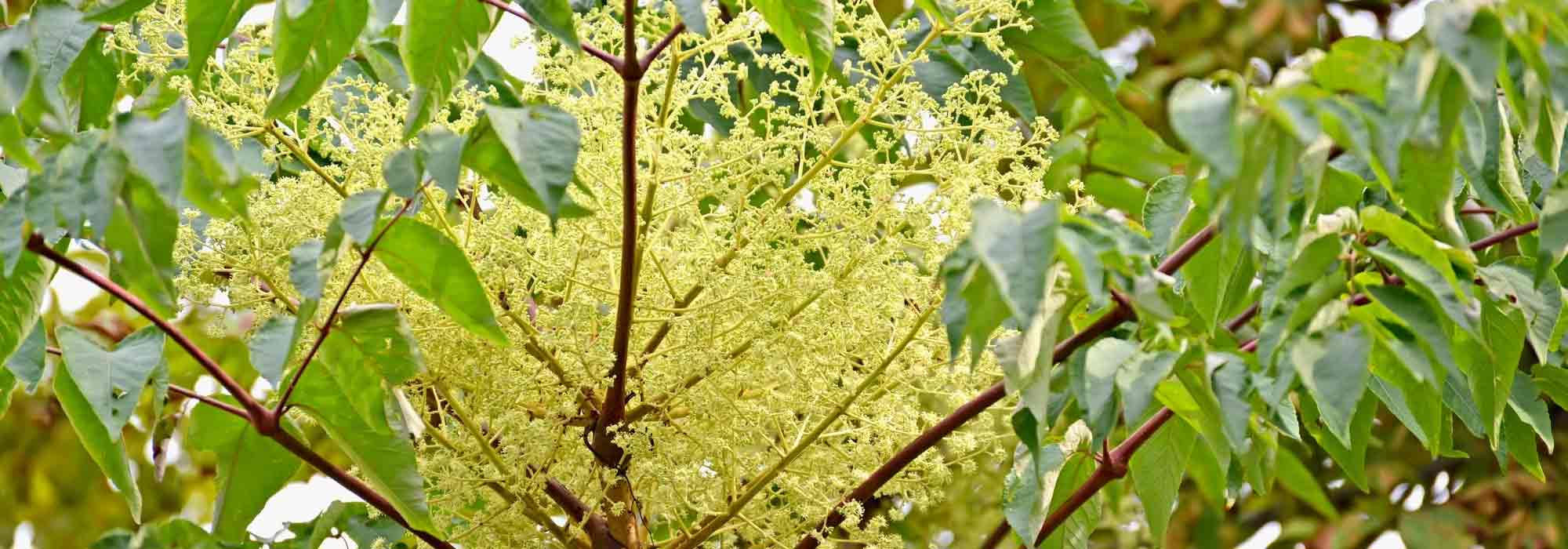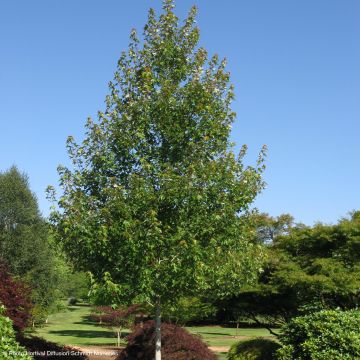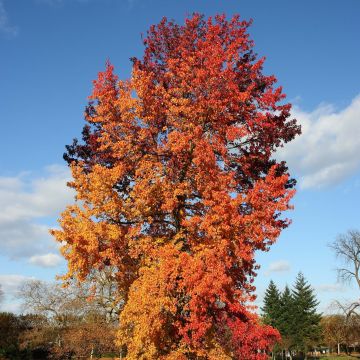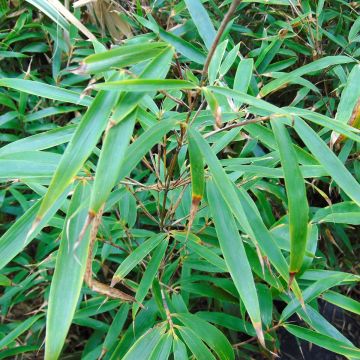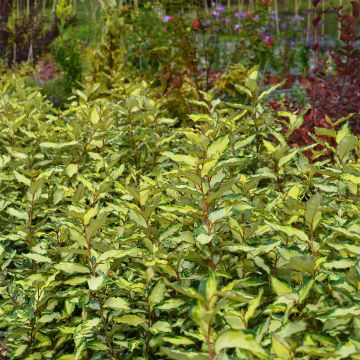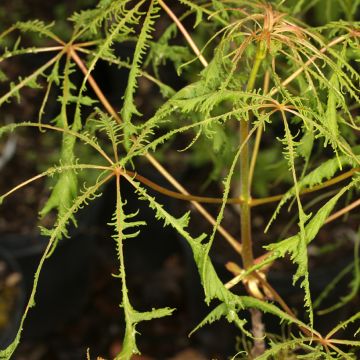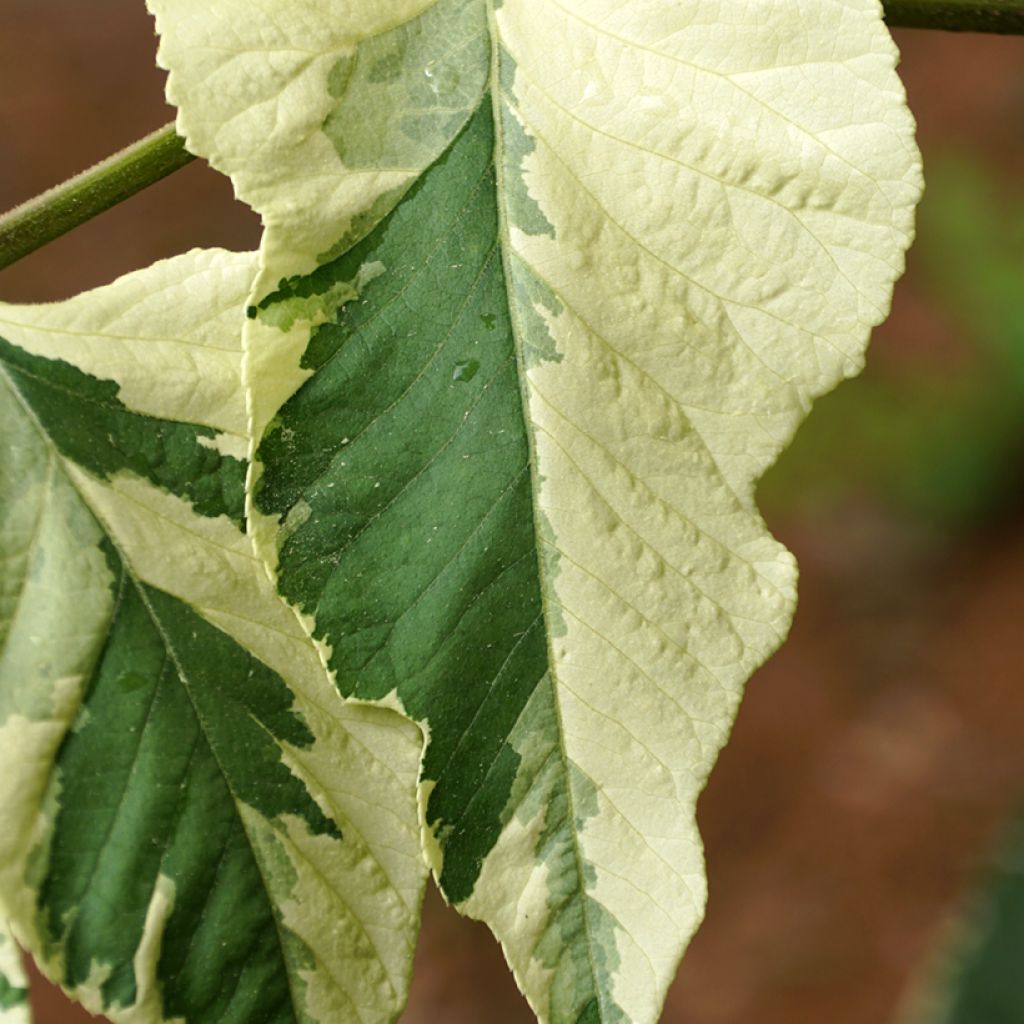

Aralia elata Silver Umbrella
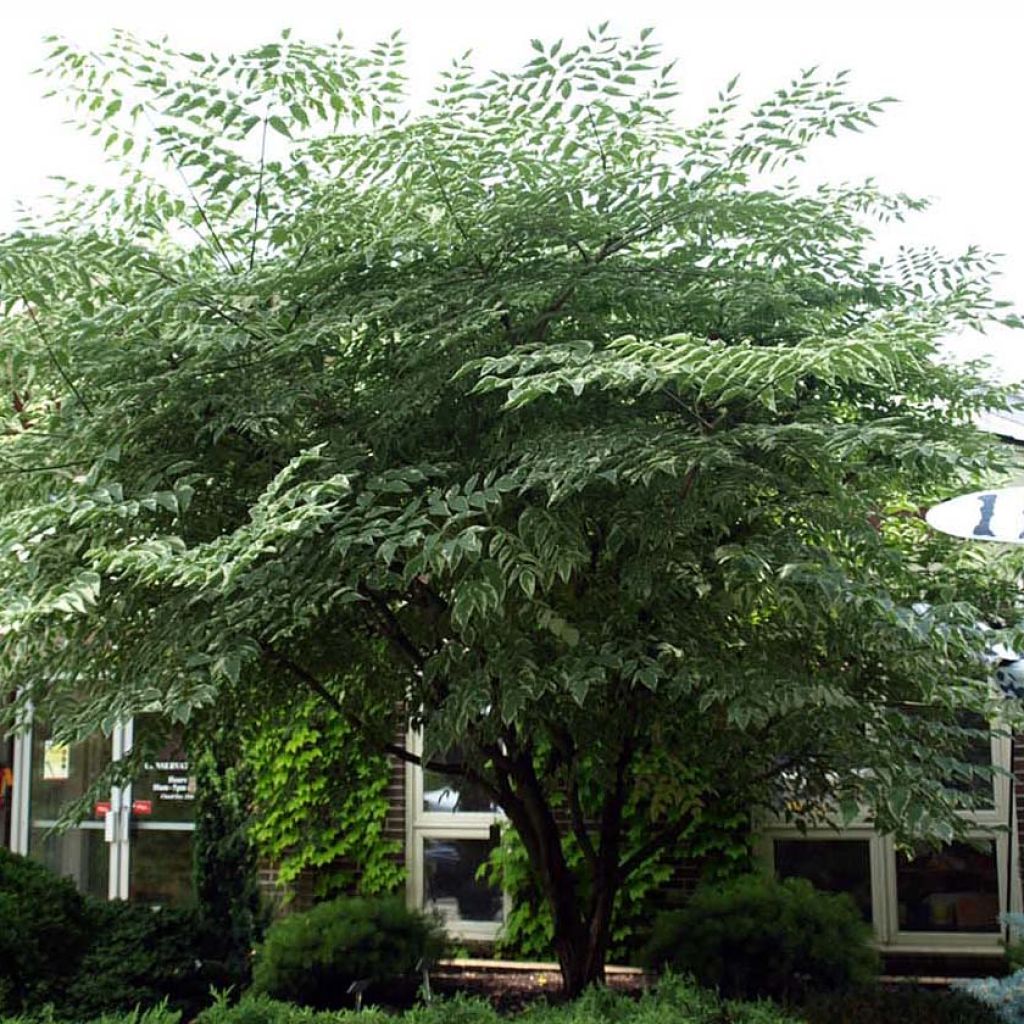

Aralia elata Silver Umbrella
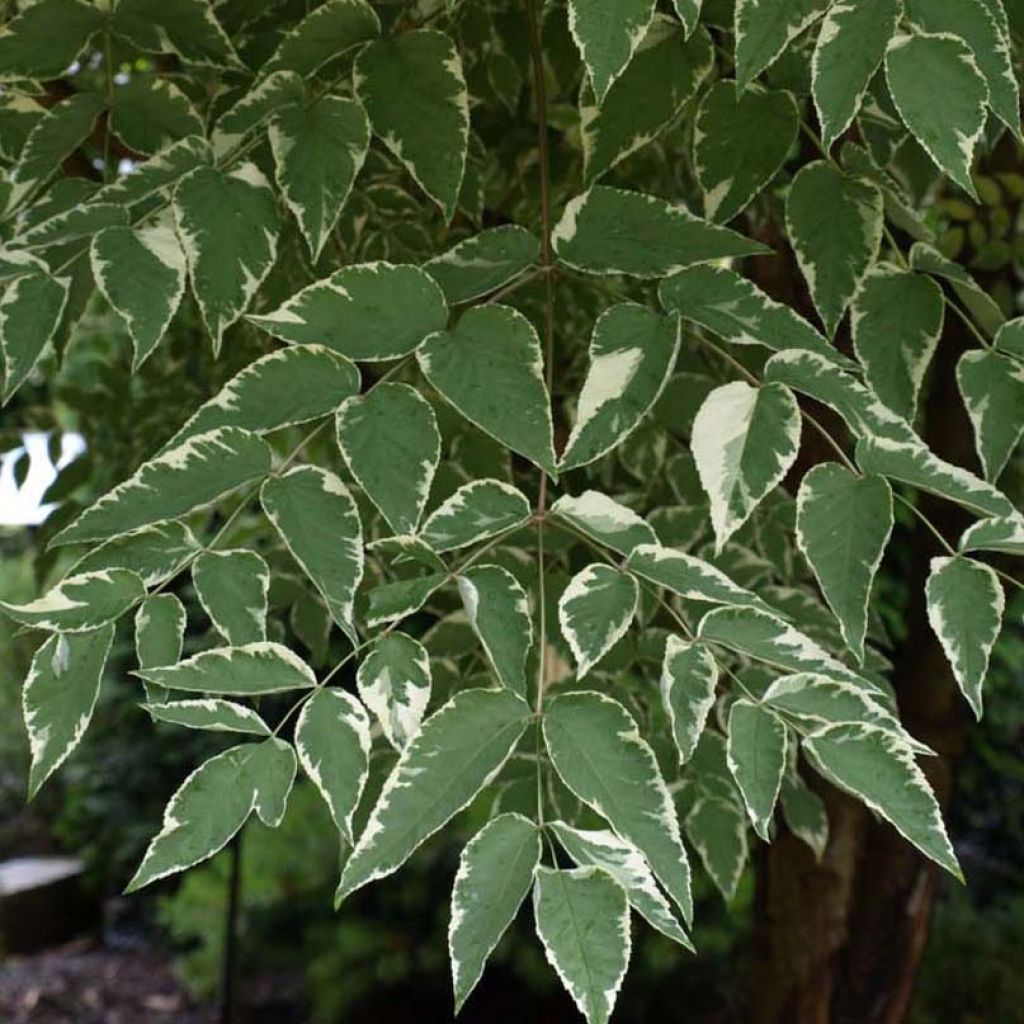

Aralia elata Silver Umbrella
View more pictures
Hide images
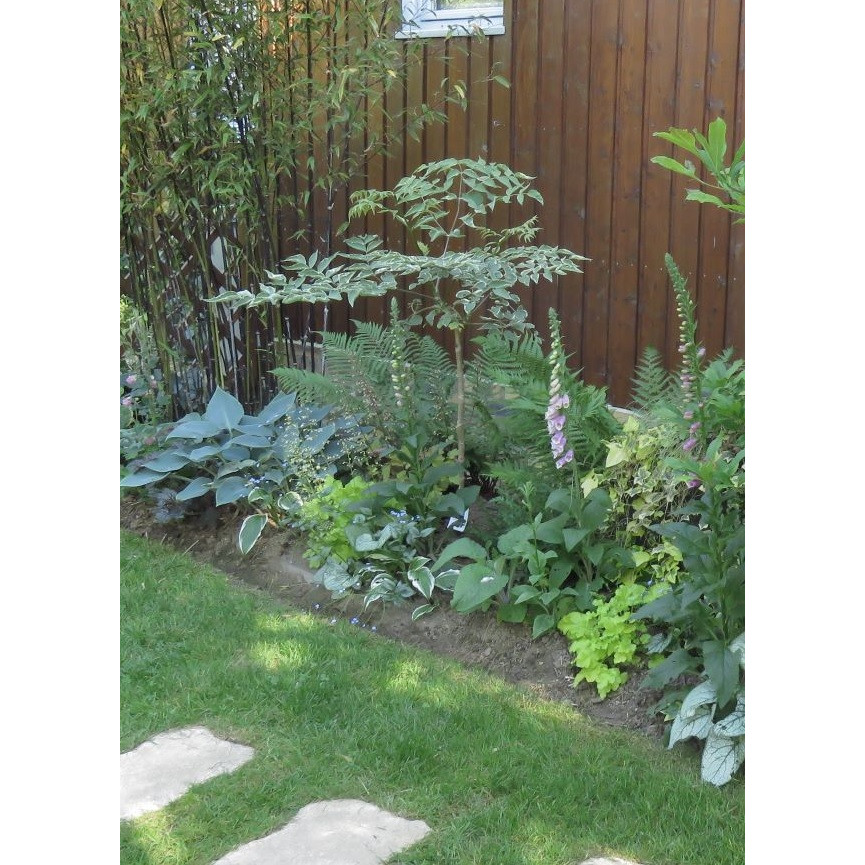
.

ARALIA ELATA _MAY_BEFORE HEATWAVE
.
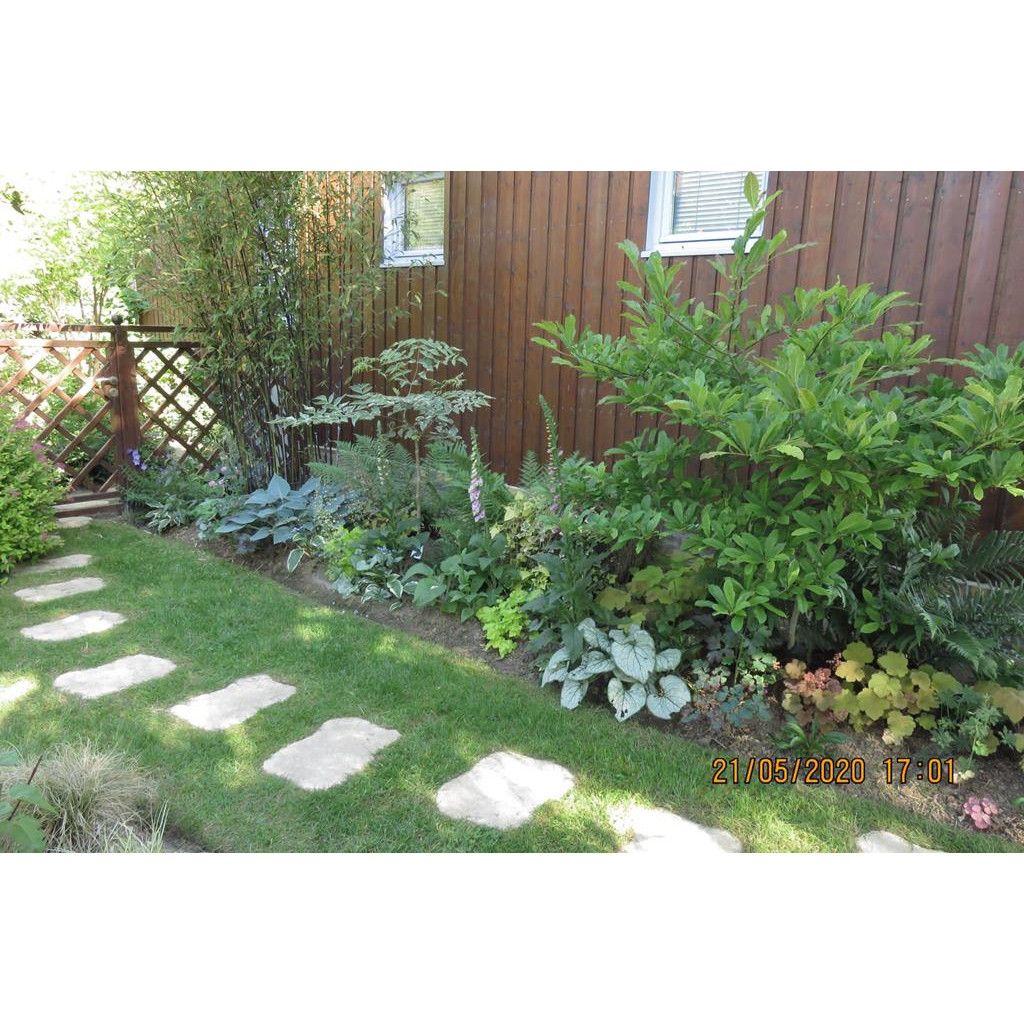
.

This is a plant that grows and grows. It is a beautiful plant with lovely leaves. It is a plant that gives a lot of pleasure.
.
Aralia elata Silver Umbrella
Aralia elata Silver Umbrella
Japanese Angelica Tree, Devil's Walking Stick
I planted an Aralia on the advice of my landscaper. My opinion: never ever touch the roots, even when weeding, otherwise it spreads everywhere and is impossible to control. Just like bamboo, but worse because it is also very thorny, even the young shoots. It should be planted where it can be controlled, in the middle of a regularly mown short grass meadow, for example. It is a very spectacular plant, at the height of the season (and after several years) the crown of leaves reaches several metres in circumference, like a large tree. In winter and until late spring, it forms a bouquet of naked, grey-white stems, with a large bud at the end. Mine reached almost 10 metres (33 feet) in height. It gives the impression that everything is dead, but it's just an impression. So yes, it's a very beautiful plant, but it should be reserved for large gardens and kept apart.
Marie, 17/04/2021
Special offer!
Receive a €20 voucher for any order over €90 (excluding delivery costs, credit notes, and plastic-free options)!
1- Add your favorite plants to your cart.
2- Once you have reached €90, confirm your order (you can even choose the delivery date!).
3- As soon as your order is shipped, you will receive an email containing your voucher code, valid for 3 months (90 days).
Your voucher is unique and can only be used once, for any order with a minimum value of €20, excluding delivery costs.
Can be combined with other current offers, non-divisible and non-refundable.
Why not try an alternative variety in stock?
View all →This plant carries a 24 months recovery warranty
More information
We guarantee the quality of our plants for a full growing cycle, and will replace at our expense any plant that fails to recover under normal climatic and planting conditions.
Would this plant suit my garden?
Set up your Plantfit profile →
Description
Aralia elata Silver Umbrella is undoubtedly one of the largest and most beautiful varieties of variegated Japanese Angelica tree. This rare bush, also known as Variegated Japanese Aralia, has a generous silhouette and perfect design that lends the garden a highly exotic and very Japanese charm. It forms a large umbrella with multiple trunks, whose branches bear large, deeply cut leaves with white-silver margins on a grey-green background. This absolute wonder is also covered in late summer with large, creamy-white, fluffy and fragrant umbels, followed by shiny blue-black fruits. With time, and with elegance, it asserts its presence, earning a celebrated place in the garden, in ordinary soil, in shade or sun.
Japanese angelica belongs to the Araliaceae family. It is native to Japan and northeastern Asia. It is a bushy plant that can reach 4 to 5 m (13 to 16 ft) in height, and its spread will exceed 5 m (16 ft ) once mature. The 'Silver Umbrella' variety is mainly distinguished by slightly less developed foliage, but beautifully edged with silver-white. Often grafted onto more hardy green varieties, young plants grow on a single trunk, with leaves only at the top, but as they age, more and more lateral branches appear. The bark is gray, in small prickly plates. These sharp spines can also be found on the branches. The leaves are deciduous. They can sometimes reach 50 cm (20 in) in length, and they are divided into numerous narrow and pointed leaflets that have small spines on the petiole. The flowers appear in late summer and last for several weeks. They are formed of tiny cream-white specks grouped together in a light cloud that evokes a fragrant mist of bees buzzing above the foliage. They are actually grouped in a flexible panicle 20 to 40 cm (8 to 16 in) long. Small blackish fruits then appear, highly sought after by birds. Aralia elata has a tendency to multiply by suckering and forms clumps, which is why it is called the walking tree.
It is a very beautiful bush that is not afraid of the cold or the shade and will adapt to most light and moist soils. Its highly ornamental foliage deserves to be protected from strong winds to preserve all its beauty. Once established, it is stunning when planted alone on a lawn or grouped together in a cluster. It is also interesting combined with trees and shrubs that, like itself, appreciate moist to wet soils - such as alder buckthorn, rosemary-leaved willow, and guelder rose. In a more exotic setting, choose to associate it with other beautiful Asian plants such as the caramel tree, Japanese maple, fatsia, or Arisaema, for example. It creates a stunning spectacle in September; its sparkling mass of snow-white and silver, perhaps reflected on the surface of a pond, can excite the emotions or invite meditation, depending on your mood. The only precaution to take, considering its sharp spines, is with young children, who should not approach it.
Aralia elata is also a medicinal plant. Its berries and bark contain a stimulating principle used in medicine. The bark is used in herbal medicine.
Aralia elata Silver Umbrella in pictures
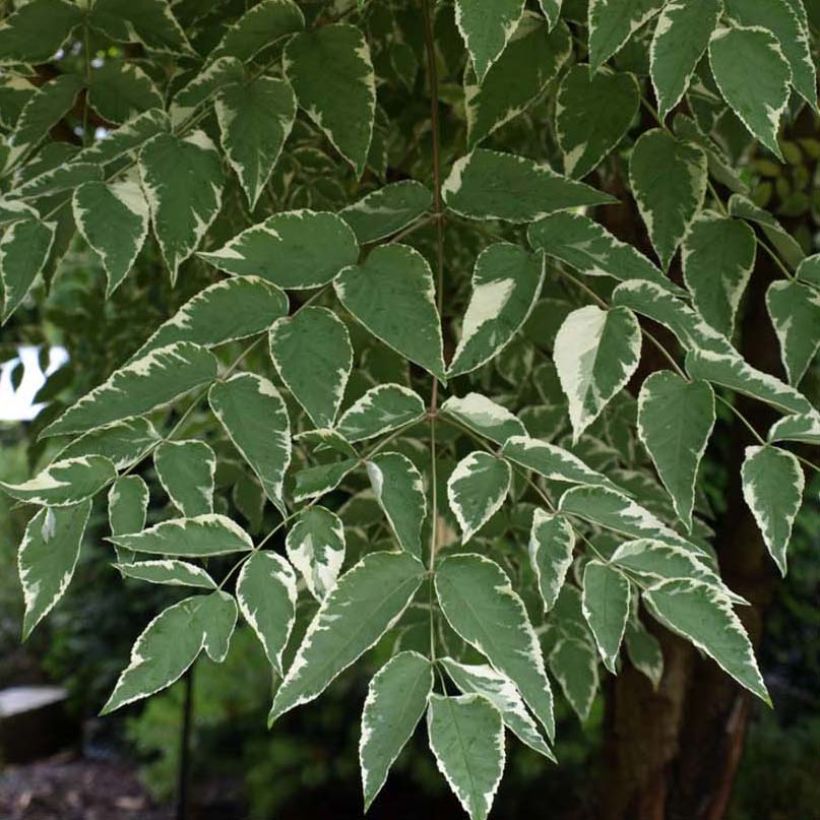



Plant habit
Flowering
Foliage
Botanical data
Aralia
elata
Silver Umbrella
Araliaceae
Japanese Angelica Tree, Devil's Walking Stick
Aralia elata (Variegata)
Cultivar or hybrid
Other Aralia
View all →Planting and care
Aralia elata Silver Umbrella prefers a partially shaded site, or morning sun, but it also tolerates shade. Care should be taken to install it sheltered from strong or drying winds to spare its ornamental foliage. This bush thrives in moist to damp, fertile, neutral to slightly alkaline soil, but it seems that poor soil produces hardier subjects with greater longevity. It is not picky about soil type and easily adapts to any ordinary, deep, well-drained, and not too dry soil. This small tree sometimes tends to send shoots out, without being invasive. Simply remove the small shoots as soon as they appear. Remove any regrowth or green branches that could eventually unbalance the overall branching and overshadow the variegated foliage.
Planting period
Intended location
Care
Planting & care advice
-
, onOrder confirmed
Reply from on Promesse de fleurs
Similar products
Haven't found what you were looking for?
Hardiness is the lowest winter temperature a plant can endure without suffering serious damage or even dying. However, hardiness is affected by location (a sheltered area, such as a patio), protection (winter cover) and soil type (hardiness is improved by well-drained soil).

Photo Sharing Terms & Conditions
In order to encourage gardeners to interact and share their experiences, Promesse de fleurs offers various media enabling content to be uploaded onto its Site - in particular via the ‘Photo sharing’ module.
The User agrees to refrain from:
- Posting any content that is illegal, prejudicial, insulting, racist, inciteful to hatred, revisionist, contrary to public decency, that infringes on privacy or on the privacy rights of third parties, in particular the publicity rights of persons and goods, intellectual property rights, or the right to privacy.
- Submitting content on behalf of a third party;
- Impersonate the identity of a third party and/or publish any personal information about a third party;
In general, the User undertakes to refrain from any unethical behaviour.
All Content (in particular text, comments, files, images, photos, videos, creative works, etc.), which may be subject to property or intellectual property rights, image or other private rights, shall remain the property of the User, subject to the limited rights granted by the terms of the licence granted by Promesse de fleurs as stated below. Users are at liberty to publish or not to publish such Content on the Site, notably via the ‘Photo Sharing’ facility, and accept that this Content shall be made public and freely accessible, notably on the Internet.
Users further acknowledge, undertake to have ,and guarantee that they hold all necessary rights and permissions to publish such material on the Site, in particular with regard to the legislation in force pertaining to any privacy, property, intellectual property, image, or contractual rights, or rights of any other nature. By publishing such Content on the Site, Users acknowledge accepting full liability as publishers of the Content within the meaning of the law, and grant Promesse de fleurs, free of charge, an inclusive, worldwide licence for the said Content for the entire duration of its publication, including all reproduction, representation, up/downloading, displaying, performing, transmission, and storage rights.
Users also grant permission for their name to be linked to the Content and accept that this link may not always be made available.
By engaging in posting material, Users consent to their Content becoming automatically accessible on the Internet, in particular on other sites and/or blogs and/or web pages of the Promesse de fleurs site, including in particular social pages and the Promesse de fleurs catalogue.
Users may secure the removal of entrusted content free of charge by issuing a simple request via our contact form.
The flowering period indicated on our website applies to countries and regions located in USDA zone 8 (France, the United Kingdom, Ireland, the Netherlands, etc.)
It will vary according to where you live:
- In zones 9 to 10 (Italy, Spain, Greece, etc.), flowering will occur about 2 to 4 weeks earlier.
- In zones 6 to 7 (Germany, Poland, Slovenia, and lower mountainous regions), flowering will be delayed by 2 to 3 weeks.
- In zone 5 (Central Europe, Scandinavia), blooming will be delayed by 3 to 5 weeks.
In temperate climates, pruning of spring-flowering shrubs (forsythia, spireas, etc.) should be done just after flowering.
Pruning of summer-flowering shrubs (Indian Lilac, Perovskia, etc.) can be done in winter or spring.
In cold regions as well as with frost-sensitive plants, avoid pruning too early when severe frosts may still occur.
The planting period indicated on our website applies to countries and regions located in USDA zone 8 (France, United Kingdom, Ireland, Netherlands).
It will vary according to where you live:
- In Mediterranean zones (Marseille, Madrid, Milan, etc.), autumn and winter are the best planting periods.
- In continental zones (Strasbourg, Munich, Vienna, etc.), delay planting by 2 to 3 weeks in spring and bring it forward by 2 to 4 weeks in autumn.
- In mountainous regions (the Alps, Pyrenees, Carpathians, etc.), it is best to plant in late spring (May-June) or late summer (August-September).
The harvesting period indicated on our website applies to countries and regions in USDA zone 8 (France, England, Ireland, the Netherlands).
In colder areas (Scandinavia, Poland, Austria...) fruit and vegetable harvests are likely to be delayed by 3-4 weeks.
In warmer areas (Italy, Spain, Greece, etc.), harvesting will probably take place earlier, depending on weather conditions.
The sowing periods indicated on our website apply to countries and regions within USDA Zone 8 (France, UK, Ireland, Netherlands).
In colder areas (Scandinavia, Poland, Austria...), delay any outdoor sowing by 3-4 weeks, or sow under glass.
In warmer climes (Italy, Spain, Greece, etc.), bring outdoor sowing forward by a few weeks.






























